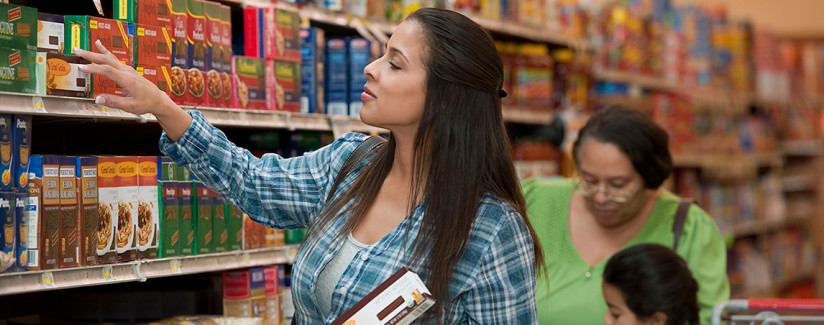
When Your Food Has a Date
Do you throw out your food when its best before date has passed? Wait, was that a “best before date,” or an “expiration date?” Is there a difference? Shouldn’t you just throw out all food once the date on the label has passed? It turns out maybe not and we may actually be creating unnecessary food waste.
We asked Dr. Sylvain Charlebois, Professor and Scientific Director at Dalhousie University, to answer our questions and clarify the difference between date labels used in Canada.
What is the difference between a best before date and an expiration date? Aren’t they the same thing?
Dr. Charlebois: “They are not the same thing. Best before dates are used for prepackaged goods. It is essentially a quality indicator. Taste, freshness of a food product, nutritional value, or anything else claimed on the package should be preserved, if the product is properly handled. Best before dates only apply to unopened shelf-stable products and essentially tell a consumer that the food will keep its quality until the listed date. A product can be sold after best before dates, most often at a discount. An expiration date, on the other hand, will indicate when a product should not be sold, bought or consumed. The product should simply be discarded if the expiration date has passed.”
Are there other types of date labels?
Dr. Charlebois: “There are a few other types of date labels such as, ‘sell by’, ‘prepared on’, ‘freeze by’ and ‘manufactured on’ dates. These types of date labels are voluntary, meaning that they can be put on a food label so long as they aren’t misleading to consumers and they meet labelling requirements.”
Are different date labels used on different food products? Who or what decides this?
Dr. Charlebois: “In compliance with labelling rules, the food manufacturer or the retailer will determine if the product has a best-before date of 90 days or less. Manufacturers may also state terms like ‘use by’ instead of ‘best before.’ They determine this date based on type of product, how it is processed, packaged and stored, and how long the product will keep it’s taste, freshness, nutritional value, or any other qualities if left unopened.”
“If a food has a greater shelf-life than 90 days, it doesn’t have to be labelled with a best before date or any sort of storage information. These foods are typically canned, or dry – such as pasta – or frozen foods.”
Who determines how long a food product is healthy for?
Dr. Charlebois: “The best-before date of food products is not set out in regulations, it is up to the food manufacturer to decide. Although, Health Canada does have regulations relating to the safety and nutritional quality of foods sold in Canada. The Canadian Food Inspection Agency is responsible for inspecting foods and enforcing these rules to ensure that all food sold in Canada are safe.”
Are foods safe to eat after this date if they still look and smell edible?
Dr. Charlebois: “Foods past their expiration date are absolutely not safe to eat. Unlike expiration dates, a food product is safe to eat even after the best before date has passed. Best before dates do not indicate food safety. However, the food may lose some of its freshness and even some of its nutritional value and flavour may be lost. Despite all this, consumers should trust their senses. If in doubt, throw it out. Also, with a compromised immune system, you should not take any chances either. The most important risk manager in the entire food chain will always be the consumer. Take proper precautions.”
What do the different date labels look like so I can spot them while I’m grocery shopping?
Dr. Charlebois: “The challenge is that the best before date may appear anywhere on the package, so consumers need to look for them. But, the best before date should always appear with the words ‘best before’. The month and day must always appear on the label, but the year doesn’t have to be mentioned, so consumers should be careful. If the year is included, the year must appear first, followed by the month, then the day. The month has to appear in both English and French languages or has to be indicated by a specific symbol that is bilingual. As an example, if the expiration date is April 13th 2019, it would appear on the label as ’19 AL 13’ or ‘AL 13’.
“Some shelf-stable products like honey or sugars, or canned and dried foods, like I mentioned earlier, may not have a date on the label. There are also certain foods that are excused from the requirement to have a best before label, including prepackaged fresh fruit and vegetables, prepackaged individual portions (such as those served by airlines), prepackaged individual servings sold in vending machines, and prepackaged donuts.”
“If you want to know anything else about date labelling in Canada you can check out the Canadian Food Inspection Agency website for more information.”
Packaged foods that have a best before date are safe to eat after that date, although it may have lost some of its flavor or freshness. Foods with an expiration date should not be eaten after the date has passed. Use your senses and when it doubt about the safety of food, throw it out.


























